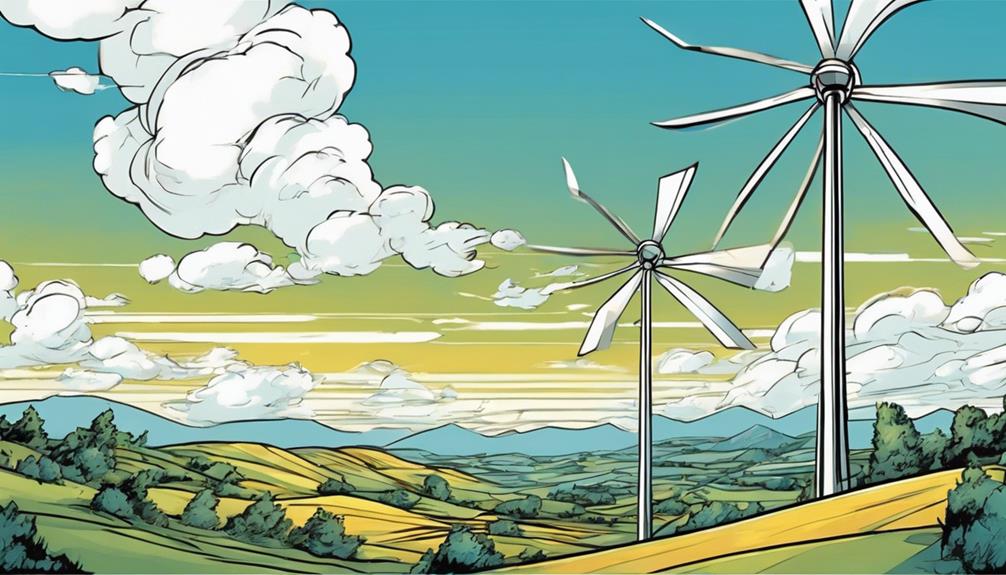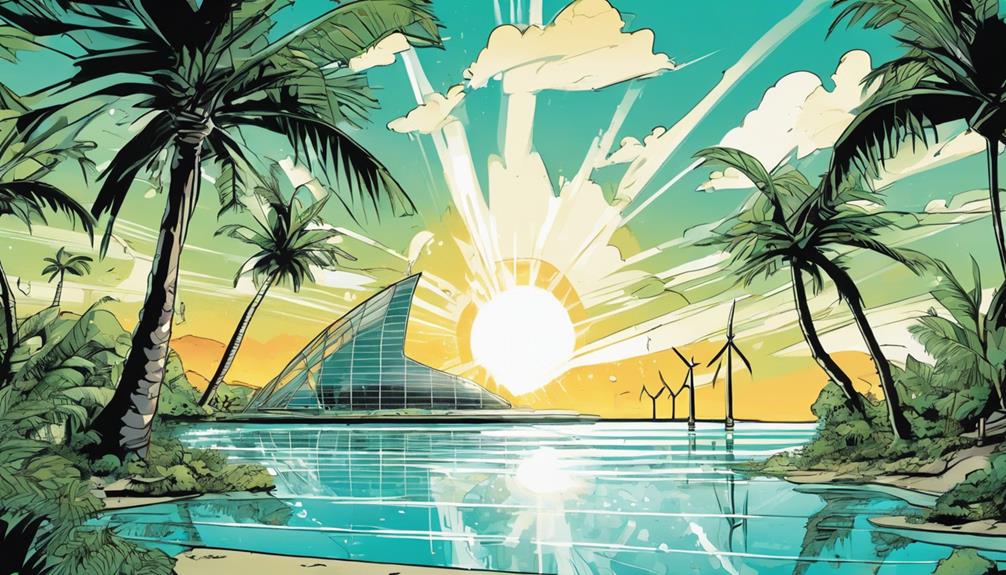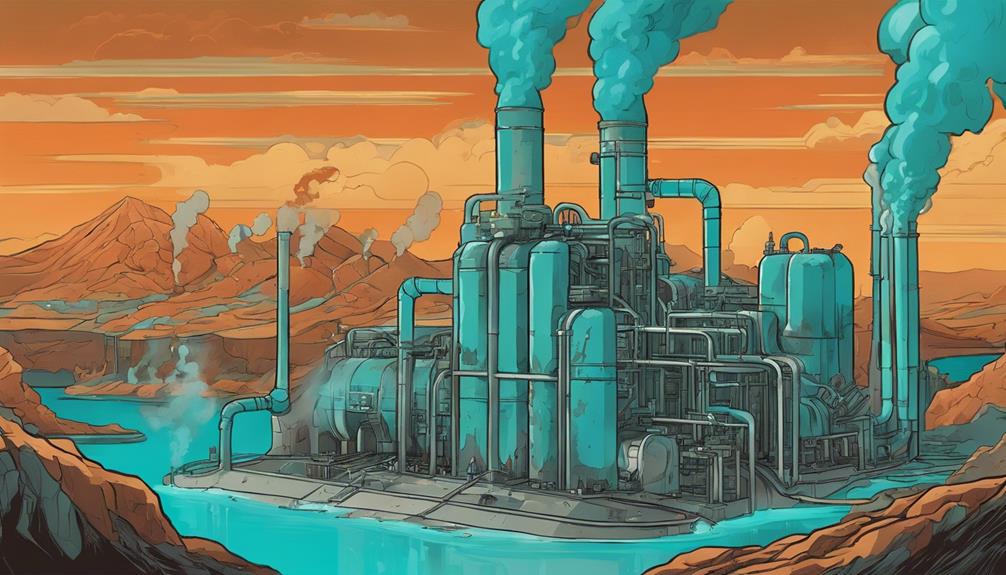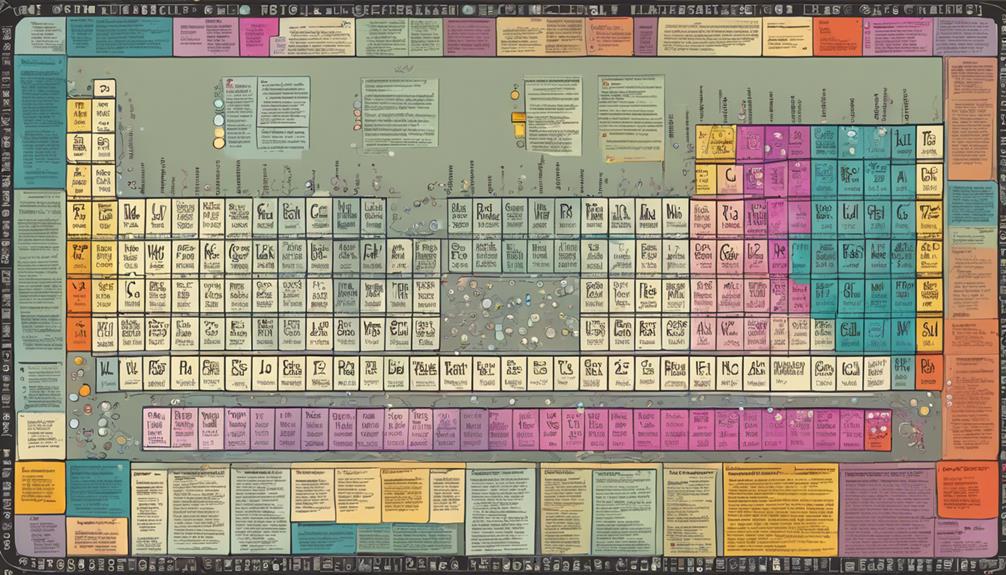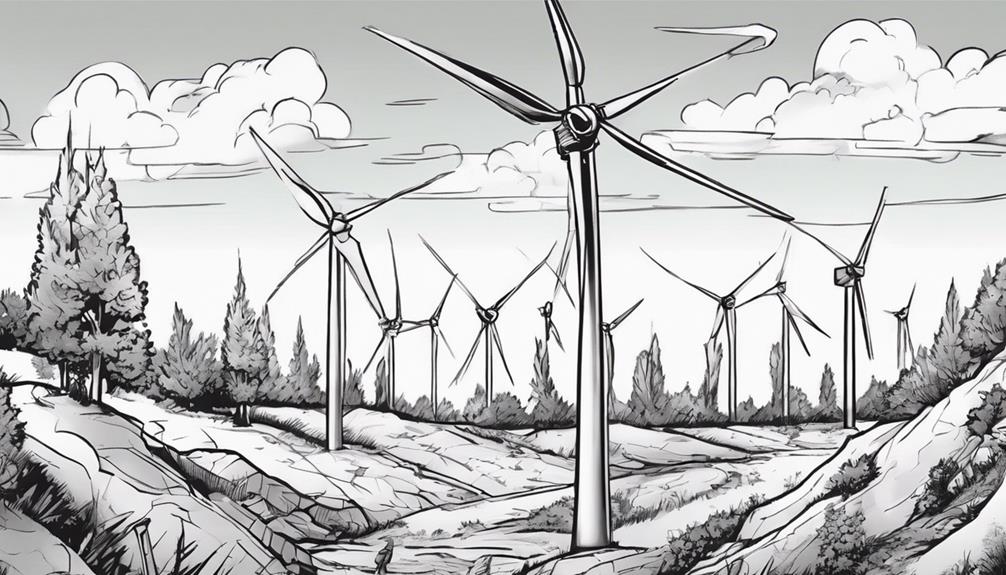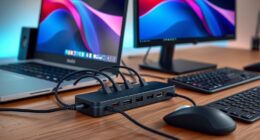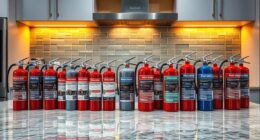Wind turbine blades have undergone significant advancements, with optimized designs and advanced materials enabling four and five-blade configurations to boost energy production by up to 15% while reducing air resistance and environmental impact. These enhancements prioritize reducing drag forces, increasing efficiency, and maximizing energy output. As technology continues to evolve, wind turbines are becoming a more viable and sustainable source of power. With the industry shifting towards larger and more efficient turbines, it's an exciting time to discover the latest innovations in wind energy.
Key Takeaways
- Advanced wind turbine blades prioritize aerodynamics and materials to reduce air resistance and increase efficiency.
- Four or five-blade designs generate up to 15% more energy, providing better stability and lower maintenance costs.
- Optimized blade design maximizes energy production, considering performance, energy output, drag forces, and wind conditions.
- Multi-blade turbines integrate with energy storage systems, reducing environmental footprint and reliance on fossil fuels.
- Technological advancements focus on enhancing reliability, reducing air resistance, and increasing energy output.
Blade Design and Efficiency
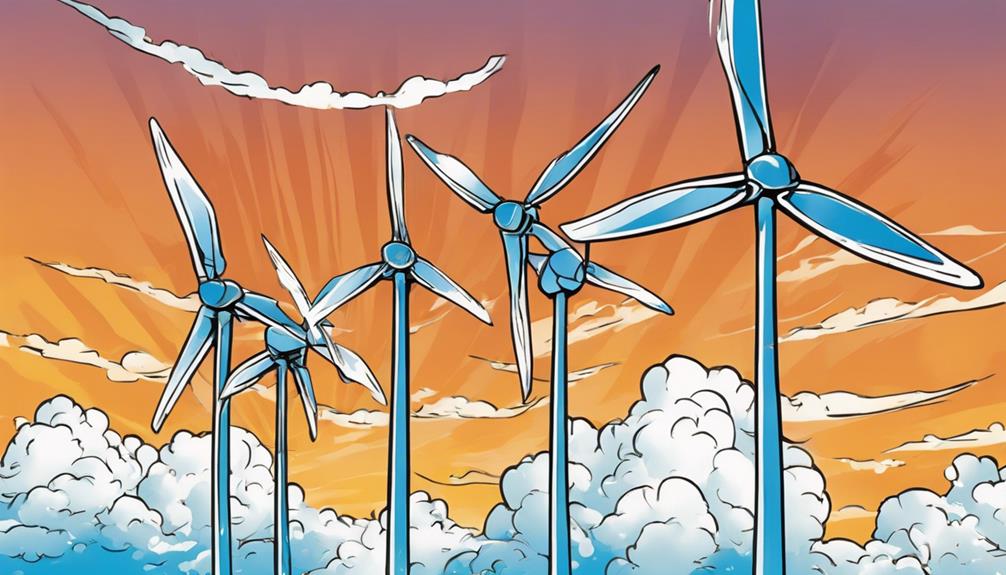
Wind turbine blades, a critical component in harnessing wind energy, have undergone significant design enhancements to boost power output and efficiency. The focus is on ideal aerodynamics, advanced materials for durability, and smart technologies for monitoring and predictive maintenance.
More blades, such as four or five-blade designs, offer increased power output by reducing air resistance and increasing efficiency. Factors like performance, energy production, drag forces, wind conditions, and overall effectiveness are considered in blade configuration choice.
Technological advancements prioritize reducing air resistance, increasing energy capture, and enhancing reliability. By optimizing blade design, wind turbines can maximize energy production, reducing the world's reliance on fossil fuels and mitigating climate change.
Environmental Impact and Sustainability

Advanced wind turbine designs, particularly those with multiple blades, play an important role in reducing the environmental footprint of energy production.
By harnessing wind energy, these turbines decrease reliance on fossil fuels, thereby lowering carbon emissions and mitigating climate change.
Additionally, multi-blade turbines contribute to preserving wildlife habitats by minimizing the physical presence of turbines on the landscape.
Another significant aspect is the repurposing of used turbine blades, which prevents landfill pollution and supports sustainable practices.
The integration of wind turbines with energy storage systems further enhances their eco-friendliness, ensuring a cleaner and more reliable energy supply.
As the world shifts to renewable energy sources, advanced wind turbine designs will remain an essential component of a sustainable future.
Cost-Effectiveness and Market Trends
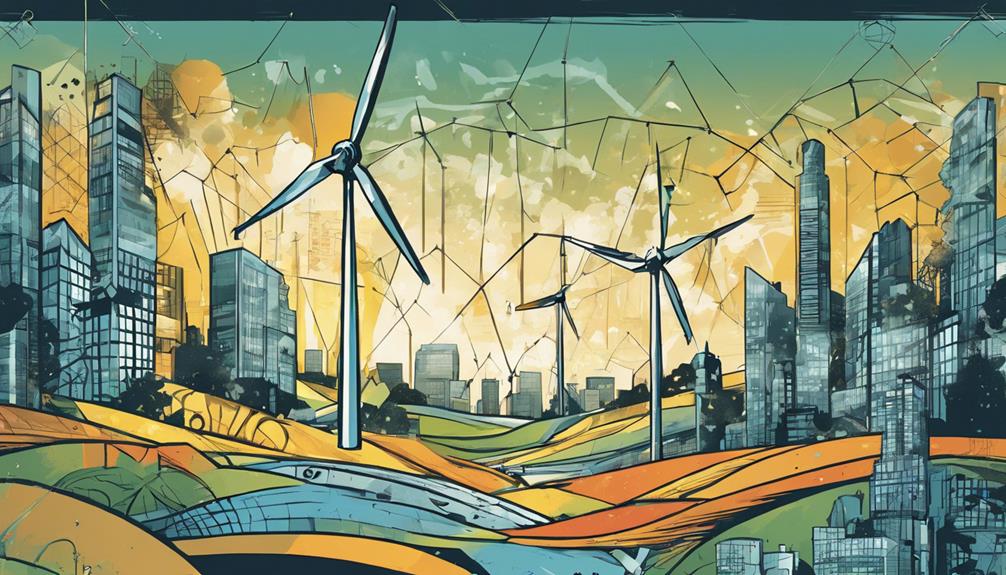
Turbine manufacturers are increasingly opting for multi-blade designs, driven by the long-term cost savings and efficiency gains these configurations offer in various wind conditions. The market is shifting towards larger and more efficient wind turbines, driven by growing demand for renewable energy sources. Governments are supporting this trend with incentives and policies, driving job creation and economic growth in the renewable energy sector.
| Blade Configuration | Cost-Effectiveness | Market Trend |
|---|---|---|
| 3-Blade | Moderate | Declining |
| 4-Blade | High | Steady |
| 5-Blade | Highest | Growing |
| Hybrid | Emerging | Increasing |
As the industry continues to evolve, the demand for multi-blade wind turbines is expected to rise, driven by their ability to provide increased energy output and efficiency in diverse wind conditions.
Performance and Advantages
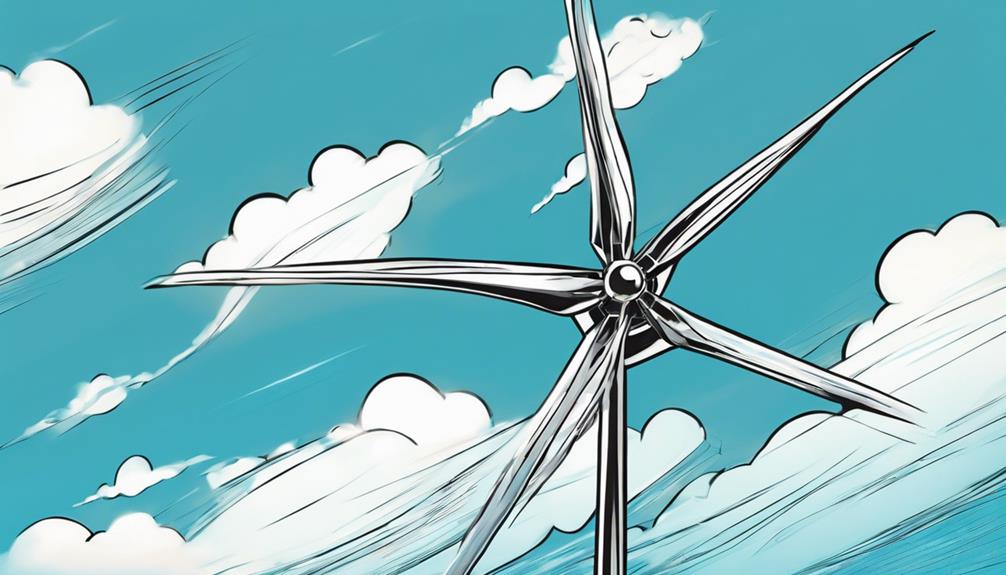
Four-blade wind turbines generate up to 15% more energy than their three-blade counterparts, providing better stability in high wind speeds and offering lower maintenance costs. This design configuration has proven to be a favorable choice for sustainable and reliable energy production.
In addition, four-blade turbines offer several advantages, including:
- Improved efficiency: Four-blade turbines can operate at higher capacities, resulting in increased energy output.
- Enhanced durability: The added blade provides extra support, reducing stress on the turbine and extending its lifespan.
- Better performance in turbulent winds: Four-blade turbines are more resistant to wind gusts and turbulence, ensuring stable operation in challenging conditions.
- Increased torque: The additional blade enables four-blade turbines to generate more torque, even at lower wind speeds.
Challenges in Wind Energy
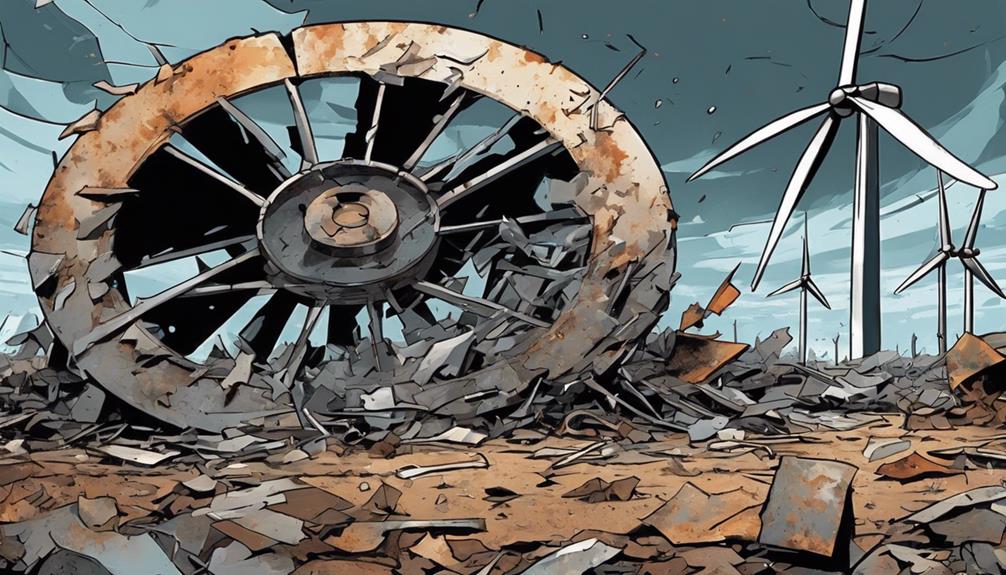
Despite the numerous benefits of wind energy, several challenges hinder its widespread adoption, including high initial expenses, extended setup times, and intricate maintenance needs for large-scale wind farms. These obstacles can dissuade investors and impede the shift to renewable energy. Moreover, the availability of appropriate land for wind farms is restricted, and regulatory obstacles in the authorization process can be time-consuming and expensive.
| Challenge | Description | Impact |
|---|---|---|
| High Initial Expenses | Initial investment required for wind farm installation | Discourages investors |
| Extended Setup Times | Time-consuming process of setting up wind farms | Delays project completion |
| Intricate Maintenance | Regular maintenance required for large-scale wind farms | Increases operational costs |
| Land Availability | Limited suitable land for wind farm installation | Restricts project locations |
| Regulatory Obstacles | Time-consuming and costly permitting process | Delays project start-ups
Technological Advancements
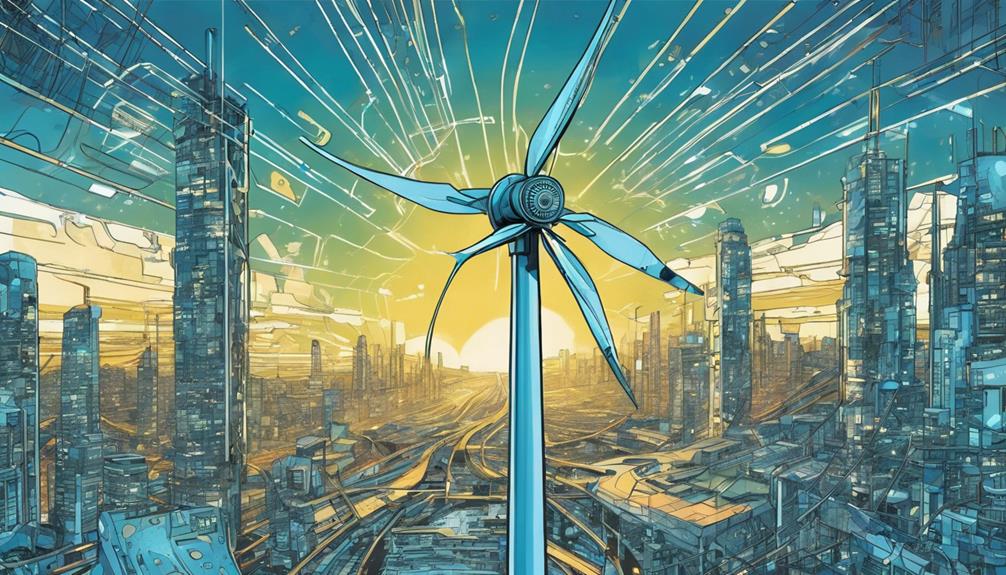
Researchers are continuously pushing the boundaries of wind turbine technology, incorporating advanced materials, aerodynamic designs, and intelligent systems to optimize performance and efficiency. These advancements aim to increase energy production, reduce maintenance costs, and minimize environmental impact.
Some key technological advancements include:
- Optimal Aerodynamics: Advanced blade shapes and airfoil designs to maximize energy capture and reduce drag.
- Advanced Materials: High-strength, lightweight materials like carbon fiber and advanced composites to improve durability and reduce weight.
- Smart Technologies: Integrated sensors and monitoring systems for real-time performance tracking and predictive maintenance.
- Predictive Maintenance Systems: AI-driven analytics to detect potential issues before they occur, reducing downtime and increasing overall efficiency.
Sustainable Energy Production
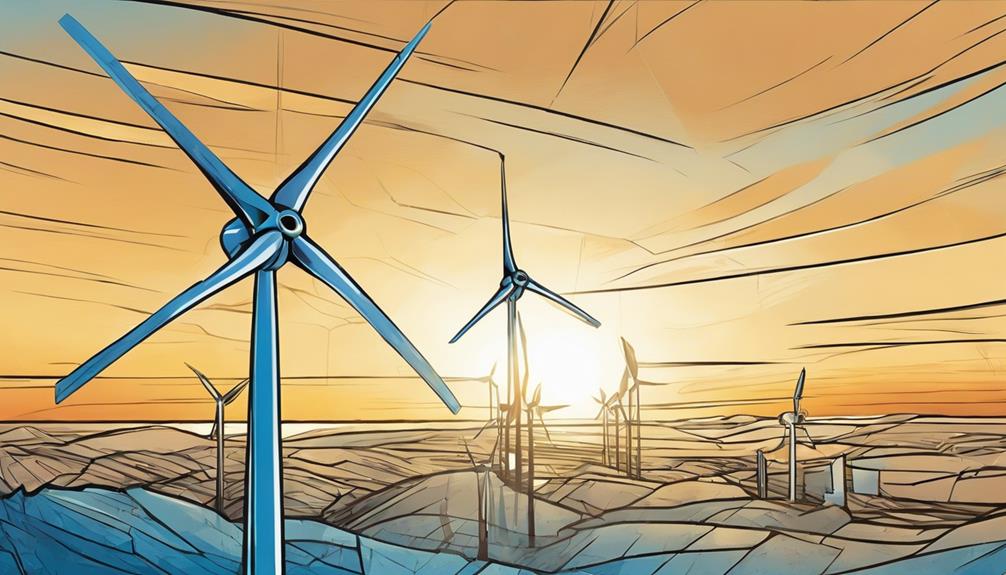
Efficient energy production is important for a sustainable future, and enhanced wind turbines with advanced blade designs are playing a significant role in reducing carbon emissions and reliance on fossil fuels.
Wind turbines with more blades, such as four or five-blade designs, contribute to lower carbon footprints and less impact on wildlife habitats.
Repurposing used turbine blades into various structures can prevent landfill pollution, contributing to global efforts in combating climate change.
Integration with energy storage systems enhances sustainability, aligning with environmental goals and reducing environmental damage caused by wind turbines.
Frequently Asked Questions
Can Wind Turbines Be Used in Urban Areas With Limited Space?
They wonder if wind turbines can be used in urban areas with limited space. While feasible, urban turbines face challenges like noise, aesthetics, and interference with buildings, requiring innovative designs and careful placement.
How Do Wind Turbines Affect Local Air Quality and Pollution?
As gentle whispers of wind sweep through the landscape, wind turbines stand tall, their blades dancing in harmony. In reality, they breathe fresh air into local environments, reducing pollution and air quality concerns by harnessing clean energy.
Are There Any Noise Reduction Technologies for Wind Turbines?
They explore noise reduction technologies for wind turbines, including optimized blade designs, sound-absorbing materials, and clever placement strategies to minimize disturbance and guarantee a more peaceful coexistence with surrounding environments.
Can Wind Turbines Be Designed for Extreme Weather Conditions?
Wind turbines can be designed to withstand extreme weather conditions, such as hurricanes or typhoons, by incorporating advanced materials, reinforced structures, and smart technologies that monitor and adapt to changing wind patterns.
Are There Any International Standards for Wind Turbine Safety?
Safety specialists scrutinize standards, seeking stringent safeguards. Yes, international standards for wind turbine safety exist, ensuring operational excellence and minimizing risks. The IEC 61400 series sets global guidelines for design, testing, and maintenance.
How Do Pitch Tubes Contribute to the Enhancement of Wind Turbines’ Power Output?
Pitch tubes play a significant role in powering wind turbines efficiently. They allow the turbine blades to adjust their angle based on wind conditions, optimizing power generation. By adjusting the pitch of the blades, the turbines can capture more wind energy and convert it into electricity, increasing overall power output.
How Do Enhanced Wind Turbines Improve Power Generation Compared to Traditional Turbines?
Enhanced wind turbines, as the future of wind turbines, utilize advanced technology to improve power generation compared to traditional turbines. By incorporating features such as larger blades, taller towers, and more efficient designs, enhanced turbines can harness more energy from the wind, ultimately leading to increased electricity production.
How Can Enhanced Wind Turbines Boost Power with Blade Optimization?
By optimizing wind turbine blades efficiency insights, enhanced wind turbines can significantly boost power generation. Through advanced design and materials, the turbines can capture more energy from the wind, resulting in increased electricity production. This optimization can lead to more sustainable and cost-effective energy solutions for the future.
Conclusion
As the winds of change sweep across the globe, enhanced wind turbines are harnessing the power of the air to fuel a sustainable future.
With blades that slice through resistance like a hot knife through butter, these turbines are redefining the boundaries of renewable energy.
As the demand for clean power continues to soar, the future of wind energy looks brighter than ever, paving the way for a greener tomorrow.
